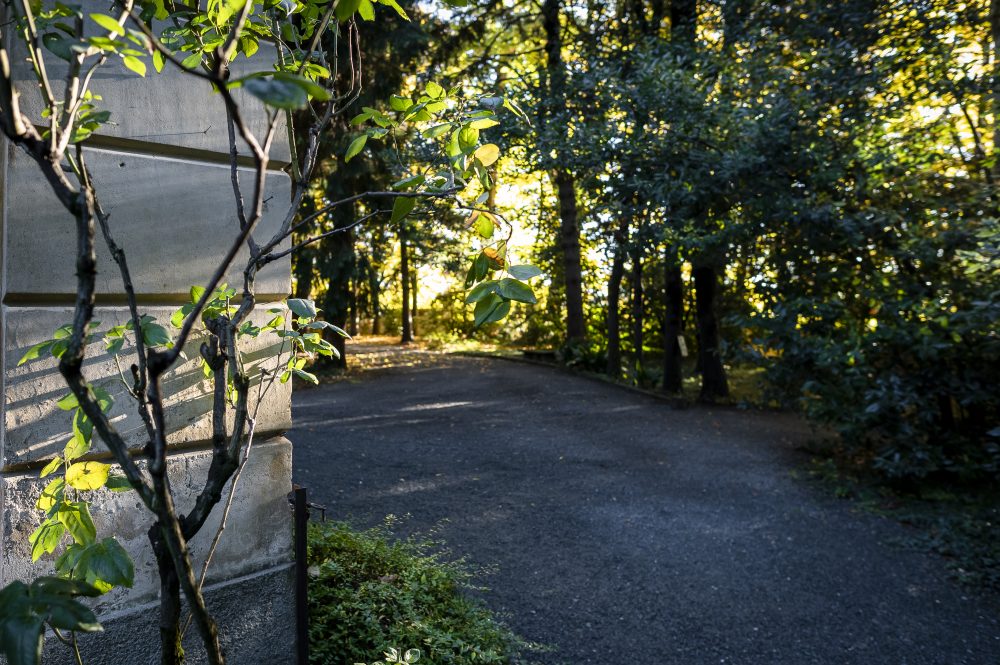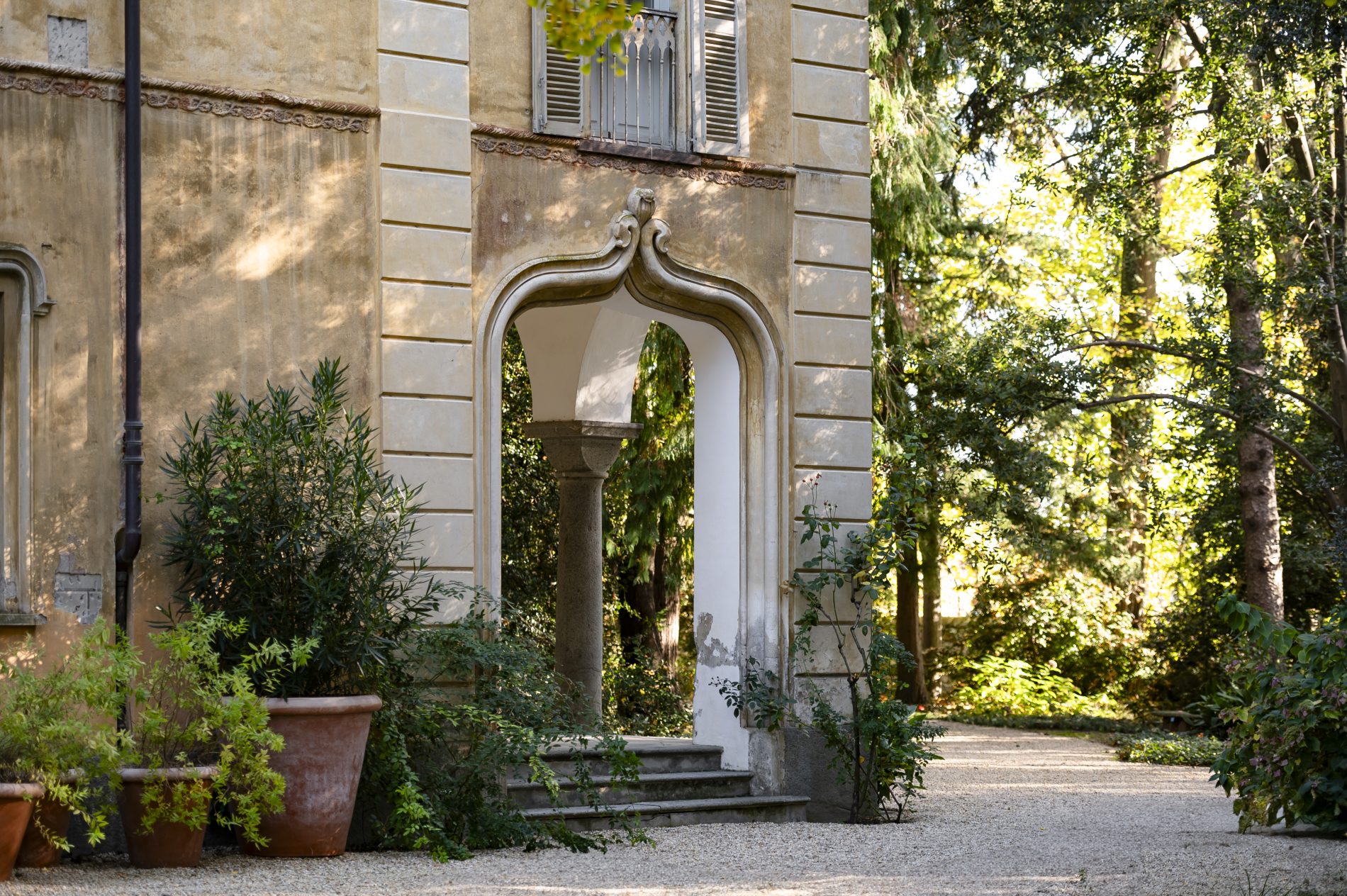The Picturesque Garden
Walking along the avenue, we gather some insights about this park, which preserves the stylistic elements typical of its designer, Xavier Kurten, a prominent figure in European garden art and a key architect of the renewal of Savoy gardens in line with the fashions of the early 19th century. Kurten's gardens, as exemplified here, express the freedom of nature, portraying a picturesque landscape that becomes poetic.
In the context of gardens and literature, "picturesque" refers to a natural scene that could be depicted in a painting. In the 18th century, the close relationship between gardening, painting, and poetry formed the foundation of a philosophy envisioning a perfect balance between natural settings and human actions.
Among the defining elements of Xavier Kurten's gardens, we will highlight some features which we have encountered or are yet to discover along this journey.
Clusters of trees and groves break up expansive clearings, creating scenic compositions and romantic vistas. The sinuous lines and irregularities, characteristic of the informal style, aim to evoke surprise and curiosity through dramatic effects achieved by combining forms and colours.
Paths or avenues seem to lead from one scene to another, allowing visitors to reach areas which are not immediately visible from a general perspective. In Kurten's parks, which, like this one, often feature a large central clearing, the main path tends to follow its contours. From there, a network of secondary paths branches out, weaving between the clearing's edges and the property’s boundaries, alternating between "open" and "closed" spaces.
The harmony of the design is shaped by the vibrancy and freshness of the greenery, along with the interruptions and shadows cast by trees, whether standing alone or in groups. Solitary trees serve as focal points to draw visitors' attention; for this effect, Kurten favored three species: oaks, horse chestnuts, and cedars. The Taxodium distichum, on the other hand, was his preferred choice for adorning lakes. Wooded areas often consist of hornbeams, complemented by exotic species such as the tulip tree.
Recurring plants in Kurten's designs include boxwoods, hydrangeas, and camellias.
Another characteristic feature of Kurten’s projects is the coexistence of ornamental and productive areas, often including a farmhouse. Orchards, vineyards, or cultivated fields not only enrich the garden but also strengthen its connection to the surrounding countryside and landscape.

Walking along the avenue, we gather some insights about this park, which preserves the stylistic elements typical of its designer, Xavier Kurten, a prominent figure in European garden art and a key architect of the renewal of Savoy gardens in line with the fashions of the early 19th century. Kurten’s gardens, as exemplified here, express the freedom of nature, portraying a picturesque landscape that becomes poetic.
In the context of gardens and literature, “picturesque” refers to a natural scene that could be depicted in a painting. In the 18th century, the close relationship between gardening, painting, and poetry formed the foundation of a philosophy envisioning a perfect balance between natural settings and human actions.
Among the defining elements of Xavier Kurten’s gardens, we will highlight some features which we have encountered or are yet to discover along this journey.
Clusters of trees and groves break up expansive clearings, creating scenic compositions and romantic vistas. The sinuous lines and irregularities, characteristic of the informal style, aim to evoke surprise and curiosity through dramatic effects achieved by combining forms and colours.
Paths or avenues seem to lead from one scene to another, allowing visitors to reach areas which are not immediately visible from a general perspective. In Kurten’s parks, which, like this one, often feature a large central clearing, the main path tends to follow its contours. From there, a network of secondary paths branches out, weaving between the clearing’s edges and the property’s boundaries, alternating between “open” and “closed” spaces.
The harmony of the design is shaped by the vibrancy and freshness of the greenery, along with the interruptions and shadows cast by trees, whether standing alone or in groups. Solitary trees serve as focal points to draw visitors’ attention; for this effect, Kurten favored three species: oaks, horse chestnuts, and cedars. The Taxodium distichum, on the other hand, was his preferred choice for adorning lakes. Wooded areas often consist of hornbeams, complemented by exotic species such as the tulip tree.
Recurring plants in Kurten’s designs include boxwoods, hydrangeas, and camellias.
Another characteristic feature of Kurten’s projects is the coexistence of ornamental and productive areas, often including a farmhouse. Orchards, vineyards, or cultivated fields not only enrich the garden but also strengthen its connection to the surrounding countryside and landscape.
